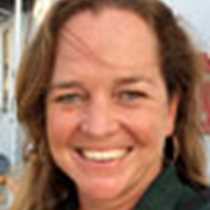Urbina Bay & Punta Moreno, Southern Isabela
It is March in the Galápagos: a time of warm waters, blue skies, hot sun and cries of joy and fun from the many kids that travel to the islands at this time of year.
There really can be no better place on Earth to learn about how important time in nature can be, to learn to value the world around us and strive to preserve it in all its wonder. As Naturalists we love to hear the enthusiastic responses that greet each new discovery: from strange reptiles to giant cactuses, from colourful fish to the ever-endearing sea lions, from blue-footed boobies to the tiny Galápagos penguins. Keen eyes and ears seek out the answers, day after day, to the Scavenger Hunts and questions handed to them by the staff, and our recap times are full of the joyful recounting of the day’s adventures.
This morning, Day Five of our expedition through this enchanted archipelago, we awoke bright and early for a good hike in an area named Urbina Bay. We learned that the whole coastline of the bay was uplifted several feet in 1954, and found ample evidence of this in the entire coral heads that we found along the walk. Upon leaving the coastline and venturing inland into the hot, arid zone, we began to encounter the spectacular reptiles that dominate the fauna of these remote islands: large, colourful land iguanas staking out their territories and the unexpected sighting of giant tortoises that had ventured down from the flanks of Alcedo Volcano.
Although rewarding, the hike was hot, and we were all relieved to reach the beach of black volcanic sand that we had landed on and jump in the cool, productive waters that bathe the shoreline. We swam and snorkeled from the beach, built castles in the black sand, and later on our younger guests were taught to drive our fleet of Zodiacs by our skilled drivers.
During the afternoon, after a wonderful presentation about Charles Darwin by one of our Naturalists, we left for a hike over broken lava fields and Zodiac rides through the mangrove-lined bays and inlets, where we found herons, sharks and rays.
How can one not be changed for good by experiences such as these?
To view video footage from today's Galapagos expedition, click here.




